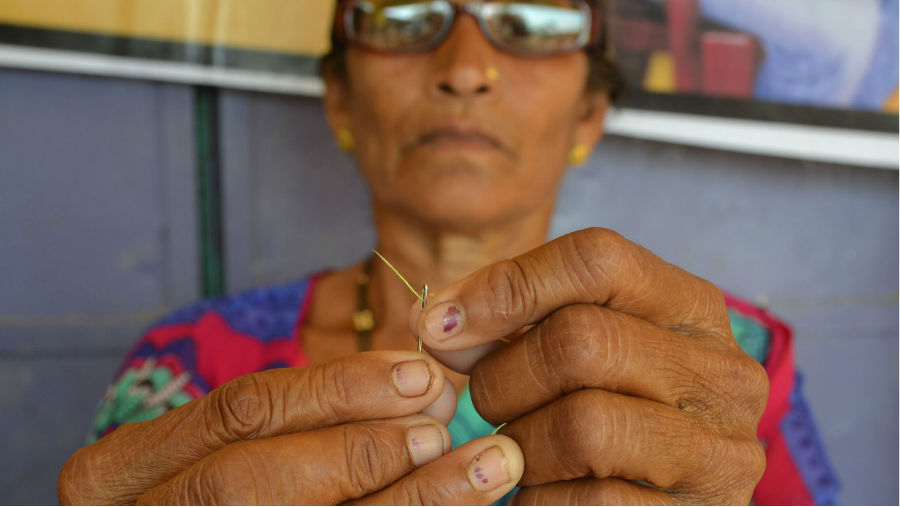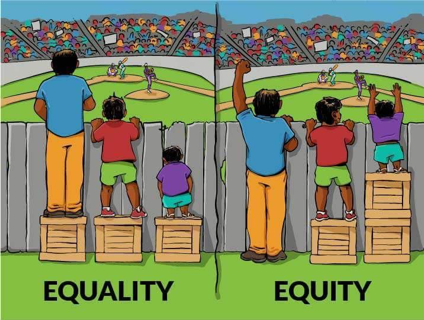Join the Leading Global Eye Health Alliance.
Membership-
Choose an alternate language here

At one level this “knowing” may just be because we “know that is how things are” in this geographic location or for this particular community; or it may be because when you stand in the middle of the OPD there is a clear majority of women or of men; or when you enter the children’s ward most of the beds are full of boys; or when you go out on a screening event most of the bi-lateral blind in the villages are old women. Or the “knowing” may be when we collect gender disaggregated data that shows us that every month there is a gender disparity in the numbers of adults and also of children attending the eye unit; or we read research papers and systematic reviews that analyse and reveal wide gender imbalances in eye care needs at district, country and global levels.
So what are we “doing” with all this “knowing”?
If we want to move to more equitable services – the key is to recognise that there is a problem, get some idea of the scale of the issue (have a baseline) and then to make a plan. And the plan needs to aim for an equally accessible service for women and men, girls and boys, responsive to their actual needs – the prevalence. But also to actively address the barriers that are preventing women or girls accessing the eye care services.
Baseline surveys, including RAABs, measure prevalence of eye care problems, and hence potential needs, for the local population. Demographics is very important – as in most communities the denominator is not of equal numbers of women and men. In elderly communities around the world there are many more women than men[1]. But the baseline surveys can also reveal the present coverage of eye care services for women and for men. The RAAB software automatically calculates CSC (cataract surgical coverage) for women and men separately, which reflects how the eye care service performed in the past. Reflecting on this data will help to guide the team how they can plan to deliver services in a more equitable manner for women and men in the future.
I still find this cartoon helpful to consider how the re-organisation of services at the local level can create changes to deliver a more equitable service for all:

Your plan for gender equitable services though will have more impact if it is deliberated and shared across a Province or a Country. It needs to be rooted in policies that apply to health service delivery in general, not just eye care. As the reasons for the gender imbalances are primarily at a societal level and relate to more than just eye care service delivery.
As we now move towards Universal Health Coverage, equality of access will move up everyone’s agenda. The eye care team can help lead the way if their analysis of the problem of gender in health care and their specific planning to address the issues are clear, and their solutions are robust and deliverable.
Last year on International Women’s Day the WHO Director General requested: “…we also must do more than speak. We must act.” I agree, and here I re-phrase it for the eye care community. We need to move from “knowing” to “doing”: The RAABs have spoken.
[vc_row el_class=”light-row rebelcell prev-blind”][vc_column width=”1/2″ el_class=”cellspace”][vc_column_text]
[/vc_column_text][vc_column_text]
[/vc_column_text][vc_separator color=”white”][vc_column_text]
[/vc_column_text][vc_separator color=”white”][vc_column_text]
[/vc_column_text][vc_separator color=”white”][vc_column_text]
[/vc_column_text][vc_separator color=”white”][vc_column_text]
[/vc_column_text][vc_separator color=”white”][/vc_column][vc_column width=”1/2″ el_class=”cellspace”][vc_column_text]
[/vc_column_text][vc_separator color=”white”][vc_column_text]
[/vc_column_text][vc_separator color=”white”][vc_column_text]
[/vc_column_text][vc_separator color=”white”][vc_column_text]
[/vc_column_text][vc_separator color=”white”][vc_column_text]
[/vc_column_text][/vc_column][/vc_row]